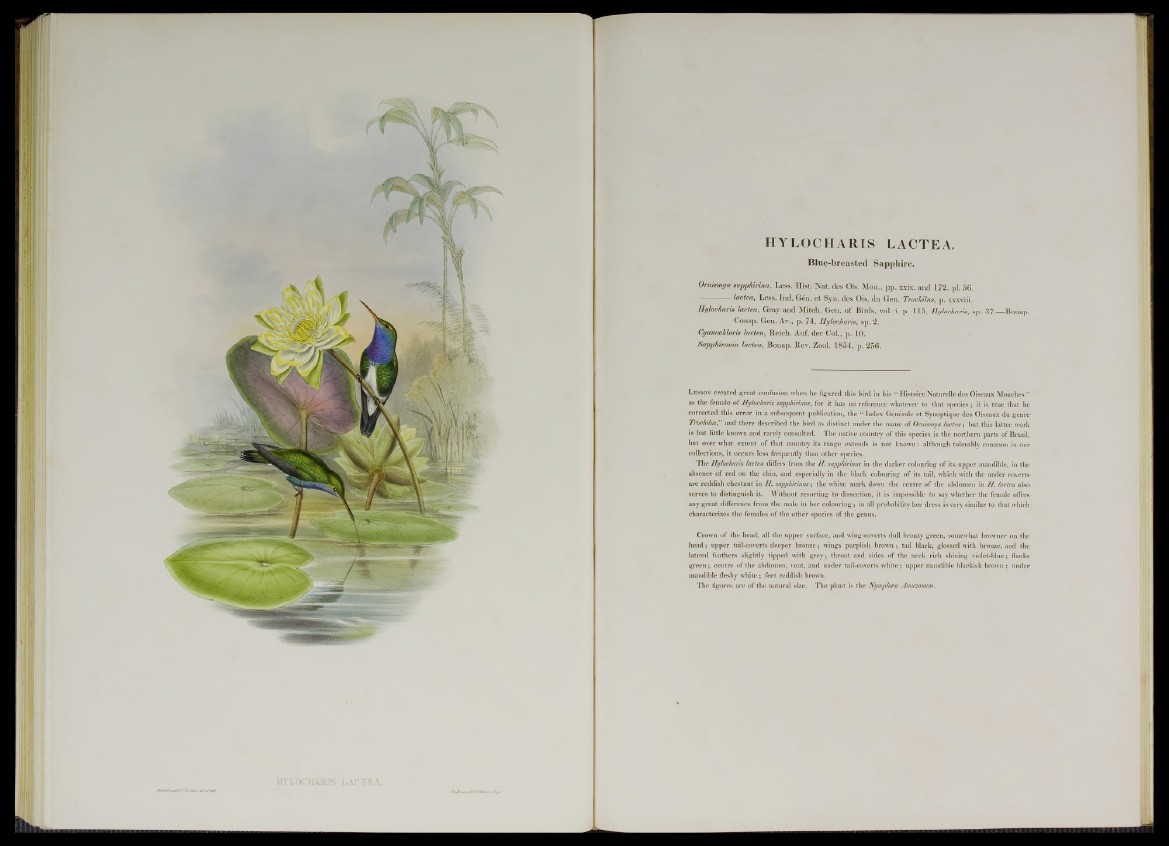
HYLOCHARIS LACTEA.
Blue-breasted Sapphire.
Ornismya sapphirina, Less. Hist. Nat. des Ois. Mou., p p . xxix. and 172. pi. 56.
— lactea, Less. Ind. Gén. e t Syn. des Ois. du Gen. Trochilus, p. xxxviii.
Hylocharis lactea, Gray an d Mitch. Gen. o f Birds, vol. i. p. 115, Hylocharis, sp. 3 7 .^B o n a p .
Consp. Gen. Av., p. 74, Hylocharis, sp. 2.
Cyanochlmñs lactea, Reich. Auf. der Col., p. 10.
Sapphironia lactea, Bonap. Rev. Zool. 1854, p. 256.
L e s s o n created great confusion when he figured this bird in his “ Histoire Naturelle des Oiseaux Mouches ”
as the female of Hylocharis sapphirinus, for it has no reference whatever to that species ; it is true that he
corrected this error in a subsequent publication, the “ Index Générale et Synoptique des Oiseaux du genre
TVochilus,” and there described the bird as distinct under the name of Ornismya lactea ; but this latter work
is but little known and rarely consulted. The native country of this species is the northern parts of Brazil,
but over what extent of that country its range extends is not known : although tolerably common in our
collections, it occurs less frequently than other species.
The Hylocharis lactea differs from the H sapphirinus in the darker colouring of its upper mandible, in the
absence of red on the chin, and especially in the black colouring of its tail, which with the under coverts
are reddish chestnut in H. sapphirinus ; the white mark down the centre of the abdomen in H lactea also
serves to distinguish it. Without resorting to dissection, it is impossible to say whether the female offers
any great difference from the male in her colouring ; in all probability her dress is very similar to that which
characterizes the females of the other species of the genus.
Crown of the head, all the upper surface, and wing-coverts dull bronzy green, somewhat browner on the
head ; upper tail-coverts deeper bronze ; wings purplish brown ; tail black, glossed with bronze, and the
lateral feathers slightly tipped with grey; throat and sides of the neck rich shining violet-blue; flanks
green ; centre of the abdomen, vent, and under tail-coverts white ; upper mandible blackish brown ; under
mandible fleshy white ; feet reddish brown.
The figures are of the natural size. The plant is the Nymphaea Amazonum,